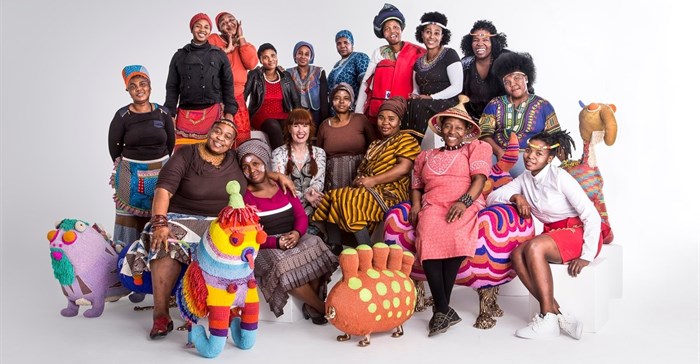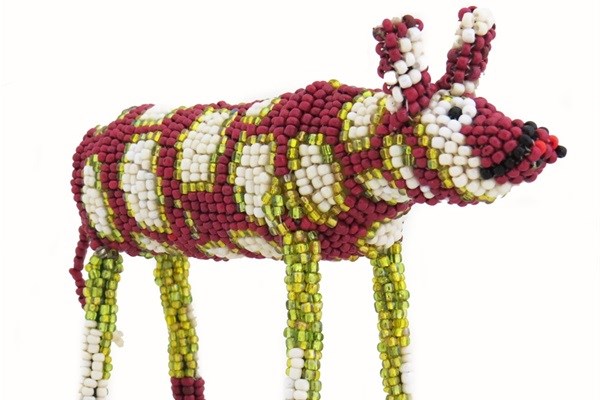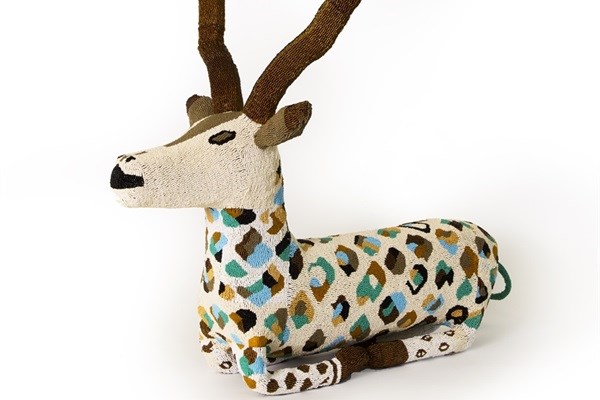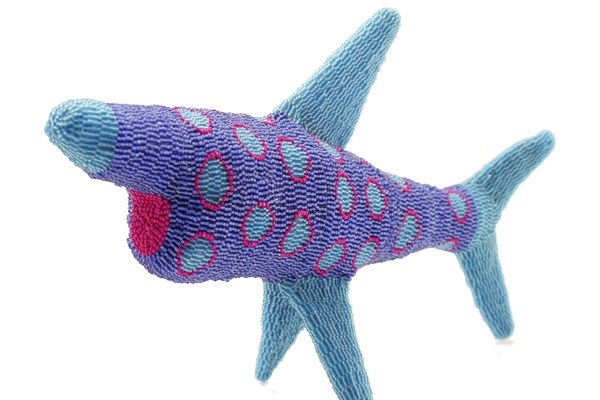#DesignMonth: The mysterious Monkeybiz of design
CreativeMornings is now in its fifth year globally, with its manifesto stating: “Everyone is creative. A creative life requires bravery and action, honesty and hard work. We are here to support you, celebrate with you and encourage you to make the things you love. We believe in the power of community, in learning from others, we believe in giving a damn, we believe in face-to-face connections, in hugs and high fives. We bring together people who are driven by passion and purpose, confident that they will inspire one another and inspire change in neighbourhoods and cities around the world. Everyone is welcome.”

With that in mind, the morning’s speaker was Kate Carlyle, general manager of Monkeybiz, who wove a tale on the topic of mystery while explaining the beading company's history, which empowers women in communities in the Cape to become creative and bring back the culture they thought they'd lost.
Artistic licence to bead what you want to bead
Carlyle said the first principle they abide by is empowering women to be financially independent in both the community and in their family, as they work from home and earn money from a skill that’s passed down through the generations. While many were living below the breadline, now they can afford to send their children to school.
The second principle is to revive the art of beadwork. While it’s always been seen as an adornment, with certain colours meaning something, there hasn’t been a big market for it, apart from tourism. The glass beads are sourced from china so their finished work is heavy and detailed, often including recycled fabric and stuffing. Packets of beads are given in certain colour combinations, but the artists have artistic license to create whatever they want, and often go through a mathematical process and even use algorithms to determine what specific patterns will look like on completion, particularly when beading items like armchairs. Yes, really.
Carlyle explained that: “Complex designs like porcupines, sharks and poodles get a wire spine, and there’s a tennis ball involved in our moneybox design, but most of the work is just traditional thread and bead.”
There are over 400 beaders on the Monkeybiz register and a market day held twice a month, including a soup kitchen. This evolved into a container in Macassar, but with so many beaders on the books, the group leaders now bring their work into town – anything of bad quality must be fixed in two weeks. Each is then given a shopping voucher, based on how much completed beaded work was brought in. Carlyle says this is better than a food parcel as it’s hard to get the mix of essentials right. They also support a funeral fund, as this is a big part of local culture and hugely expensive. Once the market day is over, the leaders are paid immediately through accounts set up by Monkeybiz and return to their communities to pass on messages. The third principle is to take their crafters to artistic level, so they become artists in their own right. Each piece has the artist’s name on the label so that specific artist’s work can be collected, which leads to an upcharge that encourages the other beaders. They also make pieces for exhibitions and bespoke work based on photos that are sent in with specific measurements. Carlyle says, “Dogs are big, but big dogs are bigger, as we have a beaded St Bernard to scale currently underway.”
Four billion yellow beads = monochrome mania
Explaining Monkeybiz’ popularity overseas, Carlyle explains they did everything in one colour as a costing exercise so that it’s easy to scale. As a result they had four billion yellow beads, which led to a rise in monochrome design that opened up an astounding new monochrome market that resulted in Monkeybiz displaying work at the NY Gift Show, which appeals to designers and decorators.
Carlyle said each piece is sold on the face, as the beaded faces are just so expressive and they keep up with fashion and cater to different markets. Beaded animals like porcupines and pandas, elephants, camels, dolls and koi fish do well, and with dogs locally endangered – there are as few as 400 left in the country – a small percentage of each beaded wild dog that’s sold is given to the Wild Dog Trust.
Talk done and dusted in under an hour, I was so intrigued, I caught up with Carlyle post event to talk about her personal love of beading and more…
1. Explain how your personal love of beading came about.
Carlyle Until I started working at Monkeybiz in 2013, I was uninformed and ignorant of the beauty and potentials of beading. As a South African I have always appreciated beadwork and valued the South African culture and heritage of beadwork, but never tried my hand in the medium. That all changed four years ago when I joined this incredible non-profit organisation started in 2000 by Barbara Jackson, Shirley Finz and Mataphelo Ngaka and grown through the talented artists that experienced the explosion of colour, passionate fervour for reviving the art of beadwork, which provided the platform for “crafters” to become recognised as true artists. You cannot ignore the influence and inspiration that floods the soul when working amongst the talent at Monkeybiz.
2. Describe the essence of a creative personality.
Carlyle: I feel a creative personality can be found in anyone, within every possible sector. The birth of a creative personality is possibly the courage to take yourself out of a pigeon hole, allow yourself to dream of possibilities and experiment with an edge. It comes from someone who takes a step into the unknown and risks successes or failures and starts to build confidence to learn a bit more of themselves.
3. It happens to the best of us – how do you overcome a creative block?
Carlyle: A “creative block” can be debilitating for anyone who is creative. Creativity is born of inspirations garnered of every sense, sight, smell, hearing, taste, touch; every facet of our existence is an inspiration. Drawing a blank can become a vicious spiral down but somehow, if you open yourself once again, a spark will resonate and within moments there is a rush of excitement and your hearts pounds to get going. To overcome a block for me is to step away, wait and know that at the most unexpected time the unexpected moment will inspire.
4 .Talk us through the sheer range of pieces Monkeybiz has created, which is often unexpected itself – both in terms of size as well as how you work with other materials such as fiberglass, bronze and felt.
Carlyle: Monkeybiz does not turn down a challenge! When asked to do something bespoke or different, unless it truly is impossible the task is tackled with enthusiasm and by-hook or by-crook we will find a way to move forward. For example, in early 2014 we met The Haas Brothers – Simon and Niki – from Los Angeles, who approached us to ask if we would collaborate with them on a beaded art collection. With no idea of what to expect we confidently accepted. Drawings were presented, which for a moment seemed daunting. Fantastic, weird creatures, 8-foot giant mushrooms, armchairs and benches with additions from fine Capetonian artists like Bronze Age’s feet, legs and stems, Jean Duchenne’s sculptures carved in wood, and Ronel Jordaan’s felt spores in mushrooms all working together to finally end in a brilliant and fantastic AFREAKS collection. This was showcased at the Miami Basel Art Fair in late 2014 and finally as a complete body of work in 2016 at the Cooper Hewitt Smithsonium in New York. Monkeybiz had achieved a remarkable height through The Haas Brothers collaboration.
It seems that moment of fame is unending, as Carlyle adds that their trip to the US made the front page of The New Yorker, and they met Jay-Z and Beyoncé in the flesh. Upping the celebrity stakes, Carlyle makes a personal journey to Asia each year. Her tales of the Tibetan struggle really resonated with local beaders, who were inspired to make a beaded Buddha. Carlyle presented this to the Dalai Lama’s PA on a recent visit.
They never turn away anyone who wants to bead, but referrals are mainly word of mouth. Many creative morning attendees enquired and were happy to hear that commercial beading classes are in the pipeline down the line as Carlyle ran similar workshops at a nunnery in India.
Visit the Monkeybiz website for more and be sure to follow Cape Town CreativeMornings on Twitter to find out about their next session.
























